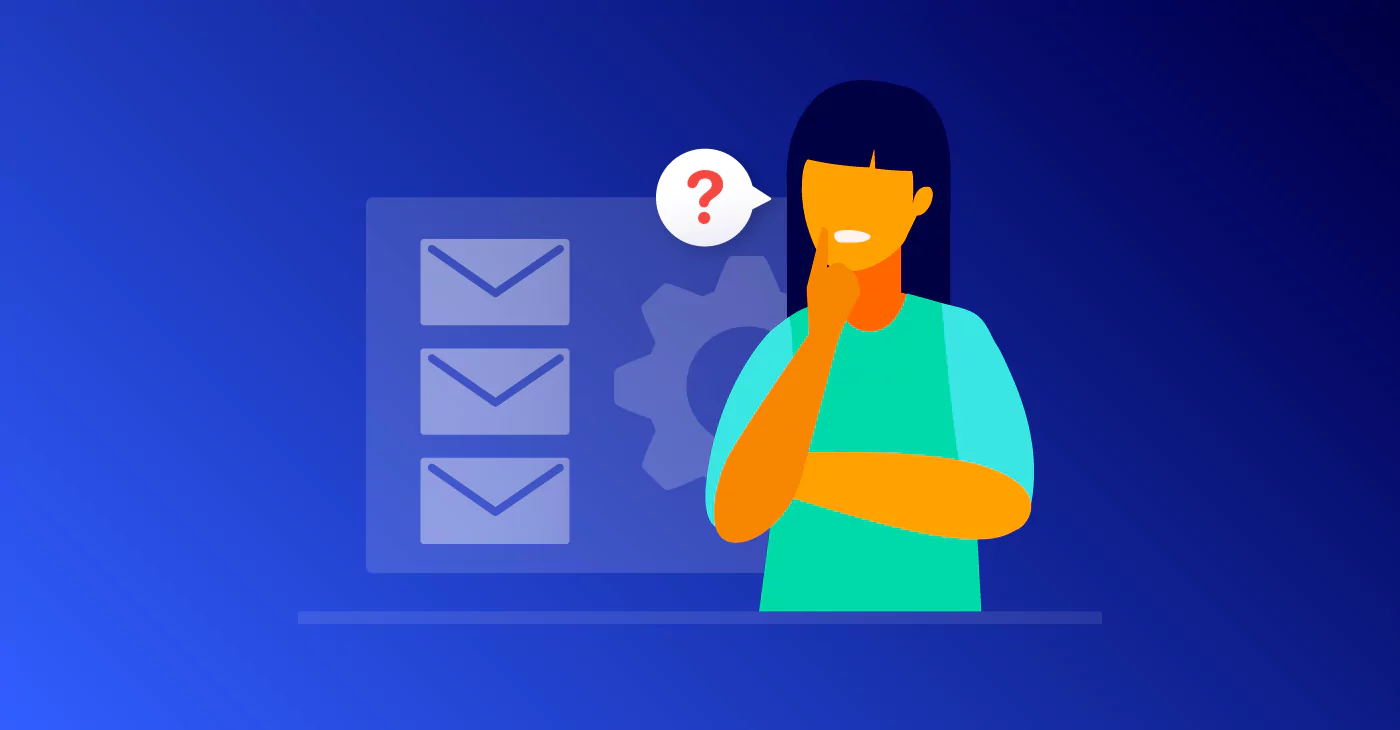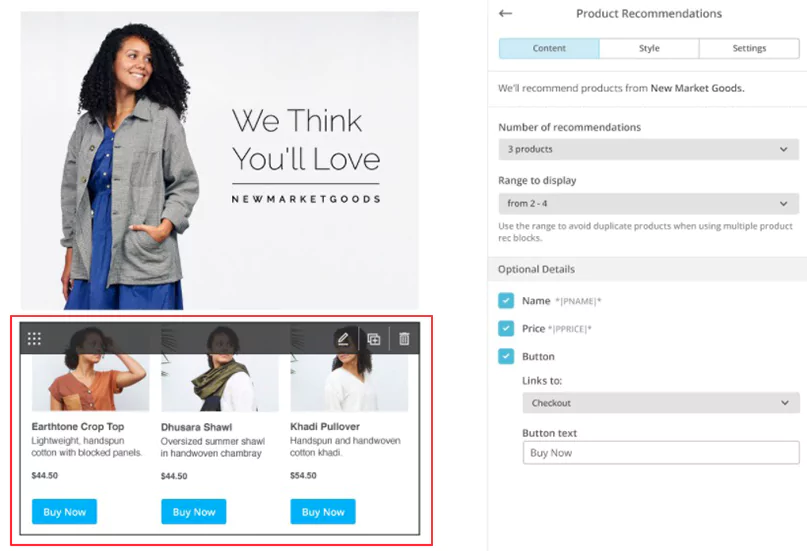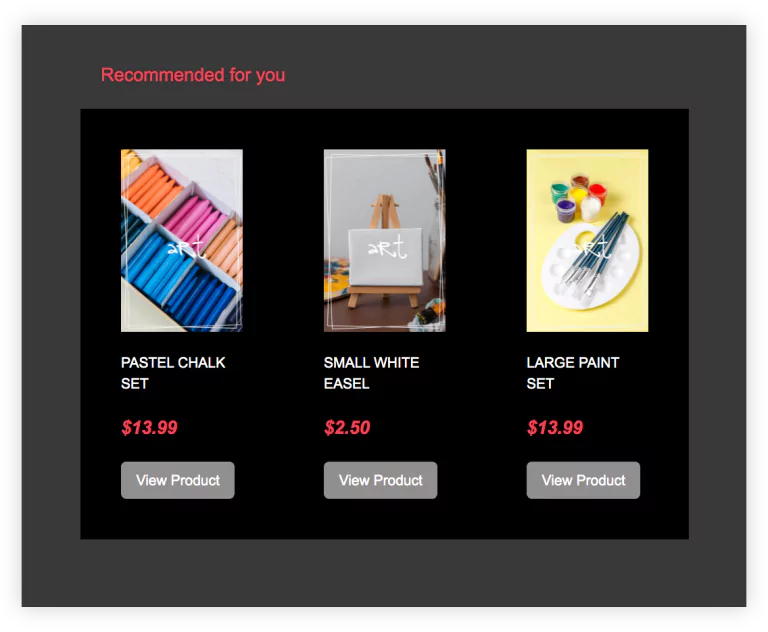What Are Product Recommendations and How to Use them In Your Email Marketing
February 22, 2022 7 min read

When it comes to personalized, targeted messaging, product recommendations are generally at the top of the priority list — and for good reason. For consumers, product recommendations are a way to get a curated list of items they may find useful based on their individual needs and preferences. And for eCommerce marketers, they’re a creative way to generate more sales.
Putting successful product recommendations to work for your business requires a bit of ingenuity and a bit of data analytics. Below, we’ll go over a few more of the key benefits of this type of marketing, plus tips for incorporating product recommendation emails into your current email marketing strategy.
What Are Product Recommendations?
A product recommendation is a suggestion or proposal of items a buyer would most likely want to purchase. In the eCommerce landscape, merchants put forward these suggestions in an app, webpage, or email.
Here’s a great example of a product recommendation:

Another example of a product recommendation is the “buy it with” and “product related to this item” sections on Amazon.com.
From these examples, you notice that the recommendation blocks display vital product details like name price and even offer a CTA for the buyer to take action.
The recommended items don’t just magically appear. Rather, you have to set an algorithm to pick the items from your website and serve them up for buyers based on their behavioral data, attributes, or situational context.
Done meticulously, product recommendations can influence up to 49% of users to buy a product that they didn’t initially intend to buy. However, when done haphazardly, recommendations can hurt your revenue. According to statistics, 38% of U.S. shoppers would stop shopping from your store if it made poor product recommendations.
Types of Product Recommendations
Product recommendations can either be bulk or personalized. Bulk is a viable option if you don’t yet have enough behavioral data about your buyers. In this case, you set the recommendation system to randomly pick the most relevant items. Bulk recommendations work best in promos or when targeting a large group of customers.
Personalized recommendation, on the other hand, is a data-backed process that ensures a particular customer gets an individualized list of products. The system picks the recommended item based on the buyer’s attributes and browsing behavior. It’s often used in triggered campaigns, and it’s a more tailored approach that can garner more positive results.
Personalization and Recommendation Engines
Today’s customers love personalized experiences, and the case is no different when it comes to product recommendations. Statistics show that 75% of online shoppers are more likely to buy based on personalized product recommendations.
Personalized product recommendations can transform your eCommerce business. However, to get it right, you have to use a reliable recommendation engine to cherry-pick the recommended items for each customer.
The software performs automated analytics using customers’ data to determine the products the customer is most likely to buy. They track and analyze data such as:
- Product category they visit
- Products they add to the cart
- Purchase history
- Age
- Gender
- Preferences
- Interest to some groups, and more
Moreover, the recommendation engine also determines when to display similar products or related products in the recommendation blocks. While in most cases, product recommendations appear in-app and on websites, you can also integrate them into your email campaigns.
When you use recommendation engines extensively, they can become prone to hurdles such as sluggish data processing and the inability to push recommended items across all customer touchpoints.
Thankfully, with the help of emerging technologies such as AI and machine learning, retailers are finding solutions to these obstacles. In 2021, 47% of email marketers used machine learning and AI to streamline individualized product recommendations.
Product Recommendation Emails: Why They’re Great
As many as 80% of shoppers are more likely to buy from companies that offer personalized experiences, and 59% say that personalization influences their shopping decisions. That gets to the heart of why product emails are such smart marketing — they take personalization to the next level and show prospects that you not only know them well but that sometimes you know what they need before they do. They also provide you with another touchpoint to easily capture your shoppers’ attention.
More of a numbers person? Reports show gains of 300% in-store revenue and 50% in average-order-value for brands that implement product recommendations in their emails. And 90% of leading marketers credit personalization efforts like these with significantly contributing to the profitability of their business.
Product recommendation emails help increase your sales and revenue by driving awareness to the items that individual purchasers are more likely to buy, and they also help get more eyes on products that are in need of an uptick in exposure. Simply put, they’re one of the best tools you have for capitalizing on personalization preferences and connecting the right buyers with the right products.
The good thing is that you can use product recommendations in all types of emails, including:
- Promotional emails
- Loyalty program emails
- Welcome emails
- Abandoned cart emails
- Customer appreciation emails
- Re-activation emails
- Order confirmation emails
- Back-in-stock emails
Regardless of the email marketing campaign, individualized product recommendations offer a lot of promise. However, to get the desired results, you have to nail the email design. This is where Benchmark Email’s eCommerce tools and Shopify Integration come in handy.

Benchmark’s customizable eCommerce blocks have the features you need to add product recommendations to your email campaign. You can add the product image, description, price, and CTA to take buyers to the checkout page. Most importantly, customizing the blocks is as easy as dragging and dropping various items. You can also add multiple column sections in case you’re recommending multiple products.
And, if you have a Shopify shop, you can simply link a product directly from it in your product recommendation email.
How to Send Out Successful Product Recommendation Emails
To be effective, product recommendation emails have to be personalized. This is done in a few different ways:
1. Know Your Audience
Make sure that you know your prospects well enough to make relevant recommendations. Marketing automation and CRM software are integral to helping you do this, allowing you to track prospects’ behavior, such as what they’re clicking on and their previous purchasing behavior. They can also cue you into patterns. If you can hone in on the most popular purchases for certain segments of your audience, you can get a better idea of what you should be marketing and to whom.
Another key thing to do here is to track browse and cart abandonments. Knowing what products your prospects were looking at before they exited your site means you can send recommendations on the nose a lot more.
2. Segment Recommendations Based on Activity
Different behaviors warrant different recommendations. While we often encourage segmenting your audience based on where they are in the buyer’s journey, there’s a lot of utility in segmenting even further here based on other types of activity, including:
- Homepage browsers
- Category browsers
- Product browsers
- Site search browsers
- Cart abandoners
The more aligned your recommendations are with what someone has already expressed interest in, the more likely those recommendations are to succeed.
3. Segment Your Messaging
Using the same behavior segmentations above, think of ways not just to target each segment with specific products but with specific messaging. What you say is just as important as what you show, especially when it comes to personalized recommendations.
Tips and Tricks for Product Recommendation Emails
Step one: Track and segment. Step two: Make sure your emails are formatted to convert. Here are a few tips and tricks to help you do it.
Use large images. They’ll be more eye-catching on the page and will draw the eye directly to the recommendation itself. Just make sure they load properly before sending.
Use enticing copy that evokes urgency. Your call to action should be specifically product-driven and even better if it lends timeliness to the purchase.
Optimize for mobile. Mobile accounts for 46% of all email opens, so make sure your product recommendations look as good on mobile as they do on a desktop.
Offer more than one recommendation. Don’t put all your eggs in one basket. Offer multiple recommendations to increase the likelihood of a conversion.
Avoid one-and-done emails. It’s okay to follow up on your product recommendations. Don’t get spammy with it, but do feel free to send a recommendation again if you think it’s a good fit.
Variety is the spice of life — and of effective email marketing. Play around with how and when you offer product recommendations in your emails, as well as the messaging that supports it. If you’re segmenting your audience and offering great products, you should start to see positive results.



